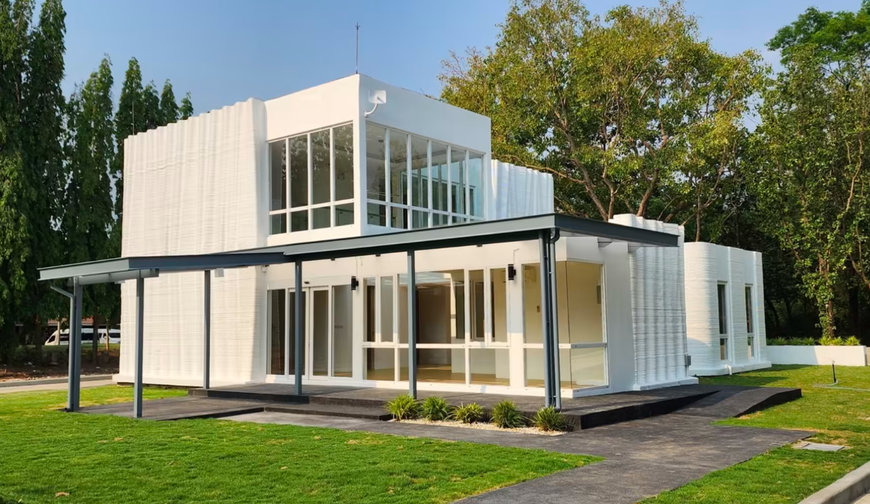The first 3D printed medical center was completed in Thailand
Siam Cement Group, has completed the first 3D printed medical center in the world using a BOD2 printer from COBOD.

- Located in Saraburi, Thailand, the new 2-story medical center is with 345m2 (3,712 SF) the largest 3D printed building in the ASEAN countries
- The unique design stands out and have only been possible due to use of 3D construction printing
Siam Cement Group (SCG), the largest and the oldest cement and building material company in Thailand and Southeast Asia, has recently revealed the successful completion of the first 2-story 3D printed building in ASEAN. What is more striking is the fact, that the building is the first 3D printed medical center in the whole world.
The stunning two-story medical center located in Saraburi, Thailand, was constructed using a state-of-the-art COBOD BOD2 3D concrete printer. This groundbreaking project boasts a total floor area of 345 m2 over 2 floors and is also the largest 3D printed building in the ASEAN countries.
The building immediately stands out on the horizon with its wavy walls. This design solution is made possible and was easy to implement thanks to the 3D construction printer and the design freedom it allows. Hence, the first 3D printed medical center features all benefits of the revolutionizing construction solution, specifically the free from design, increased building speed and reduced number of workers on site compared to conventional construction practices.
SCG now offers the market the chance to increase the construction efficiency, reduce the environmental footprint by generating less waste on the construction site, while improving the design. As an official distributor of COBOD in Thailand, SCG promotes the value of the innovative technology, which offers a range of benefits over traditional construction methods. The building was specifically designed to support seismic loads, and the use of 3D printing technology increased construction speed and reduced the amount of labor required compared to conventional building methods.
In other countries, 3D construction printing is primarily used for one story residential housing, but as the new building by SCG shows, COBOD’s technology is capable of delivering much more than that. In Africa printers from COBOD have been used for making schools, JGC in Japan is using the printer for various industrial applications, while PERI in Austria has used the technology for an office extension.
“Besides demonstrating SCG capability to build a two-story commercial building using the COBOD printer, the project's highlight was to implement our research on a 3D printed structure. In this building, we successfully implemented results from our collaborative studies with top-tier universities in Thailand for constructing a one-story 3D printed load-bearing structure and a two-story 3D printed non-load bearing structure. The design of the 3D printed medical center was approved by a senior professional engineer. The materials used in this building were SCG 3D printing mortars with strength classes of C75/80 and C30/35 for load-bearing and non-load-bearing 3D printed walls, respectively. As CPAC 3D printing solution under the SCG cement company umbrella, we aim to create best practices and standards for 3D printing construction. Moreover, our commitment is to help the construction industry become more sustainable and carbon-neutral through innovation and technology,” Commenting on SCG’s use of the printer and the plans for the future, Mr. Chalermwut Snguanyat, 3D printing & fabric concrete technology director from SCG said.
www.cobod.com

